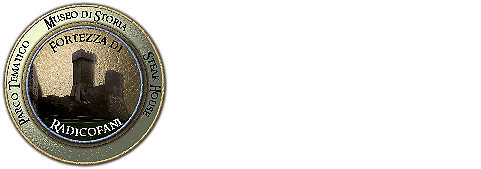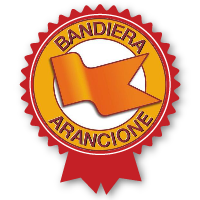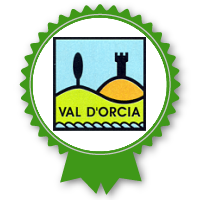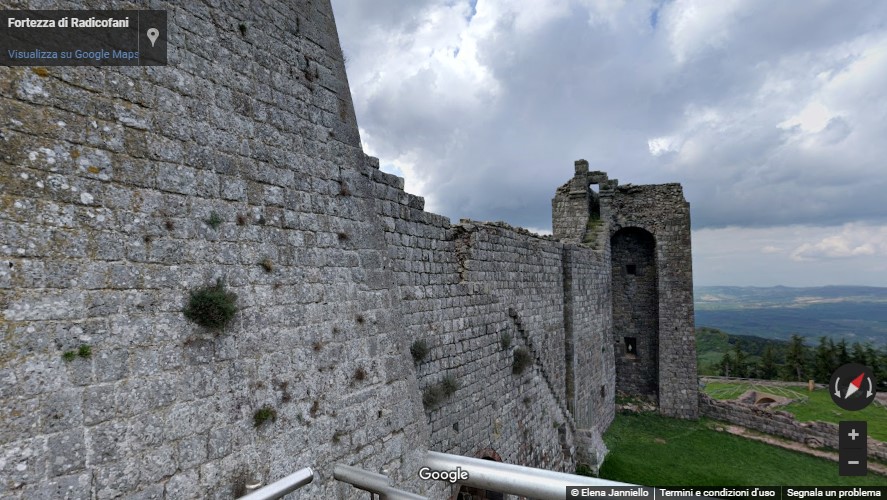Welcome to the site of the Rock of Radicofani
History Museum, Theme Park, Steak House.
A dive into art, history and nature, come to discover...
Situated at the top of a rock basalt of 896 meters, the castle or fortress of Radicofani, sits dominantly overlooking the town below and the Val D'Orcia. The archaeological site has been renovated since the 80s of the last century. Currently the sight offers visitors an interesting exploration that also includes the restored tunnels, previously not accessable , and a refreshment bar with excellent local food.
Here you will find a brief history and links to pages of interest.
come to discover...
Click to stop audio playback
History of Radicofani and its fortress
In 978 the monks of Abbadia bought it and it remained in possession until 1153, when the fortress was rescued by the Papal States and the Anglo-Saxon Pope Adrian IV, the castle being situated in a strategic position on the Via Francigena, strengthened the fortifications to halt the advance of Frederick Barbarossa.
In the following centuries the castle remained the property of the Papal States and the Republic of Siena.
In 1297 the famous "gentleman bandit" Ghino di Tacco seizes the castle and lives there for three years, becoming a Robin Hood of our house. His deeds are remembered by Dante in "The Divine Comedy" and Boccaccio in "Decameron".
In 978 the monks of Abbadia bought it and it remained in possession until 1153, when the fortress was rescued by the Papal States and the Anglo-Saxon Pope Adrian IV, the castle being situated in a strategic position on the Via Francigena, strengthened the fortifications to halt the advance of Frederick Barbarossa.
In the following centuries the castle remained the property of the Papal States and the Republic of Siena.
In 1300 the fort is handed to the Papal States and is subject of ongoing attempts of conquest. The Sienese took possession (with the obligation to pay a hefty annual fee) in 1411, restructuring and strengthening the important strategic point. In 1458 the fort was finally passed on to Siena by Pope Pius II (Enea Silvio Piccolomini in Pienza) and so began a long period of prosperity and stability. During the war between Florence and Siena, the fortress played an important role in the conflict, it was the 'last bastion of defense of the Republic of Siena. After many years of siege, the Sienese Balzana was lowered August 17 1559. It was then Cosimo I, Grand Duke of Tuscany who intervened on the old castle, enhancing the defensive role and entrusting the architect Baldassarre Lanci giving him the task of building an imposing fortress. The castle was finally abandoned in 1735, after the outbreak of arson powder that caused the almost total destruction.
Thanks to a substantial funding FIO (1989), the castle of Radicofani is back to its former glory.
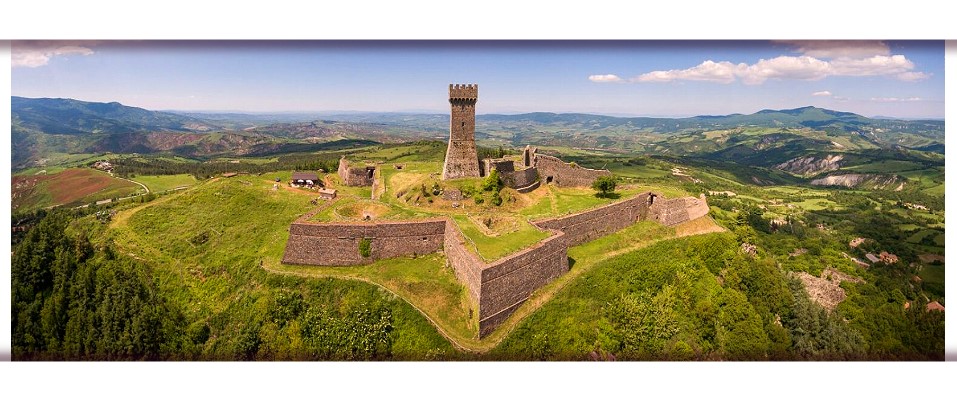
Radicofani in one click
You can learn about historic buildings, events, hospitality, shopping in Radicofani, with a simple click. Read the QR Code from your mobile or tablet (APP downloadable for free from Google Play) and access the portal.
Info, photo galleries, itineraries, gastronomy and much more ...
The Archeological Park is open in winter Saturdays and Sundays.
From April daily from 10:00 a.m. to 8:00 p.m.
Always open on bank holidays
Info and contacts:
Paul: 339 8283 953
Giovanni: 333 838 8541
Last Update
10/06/2024

